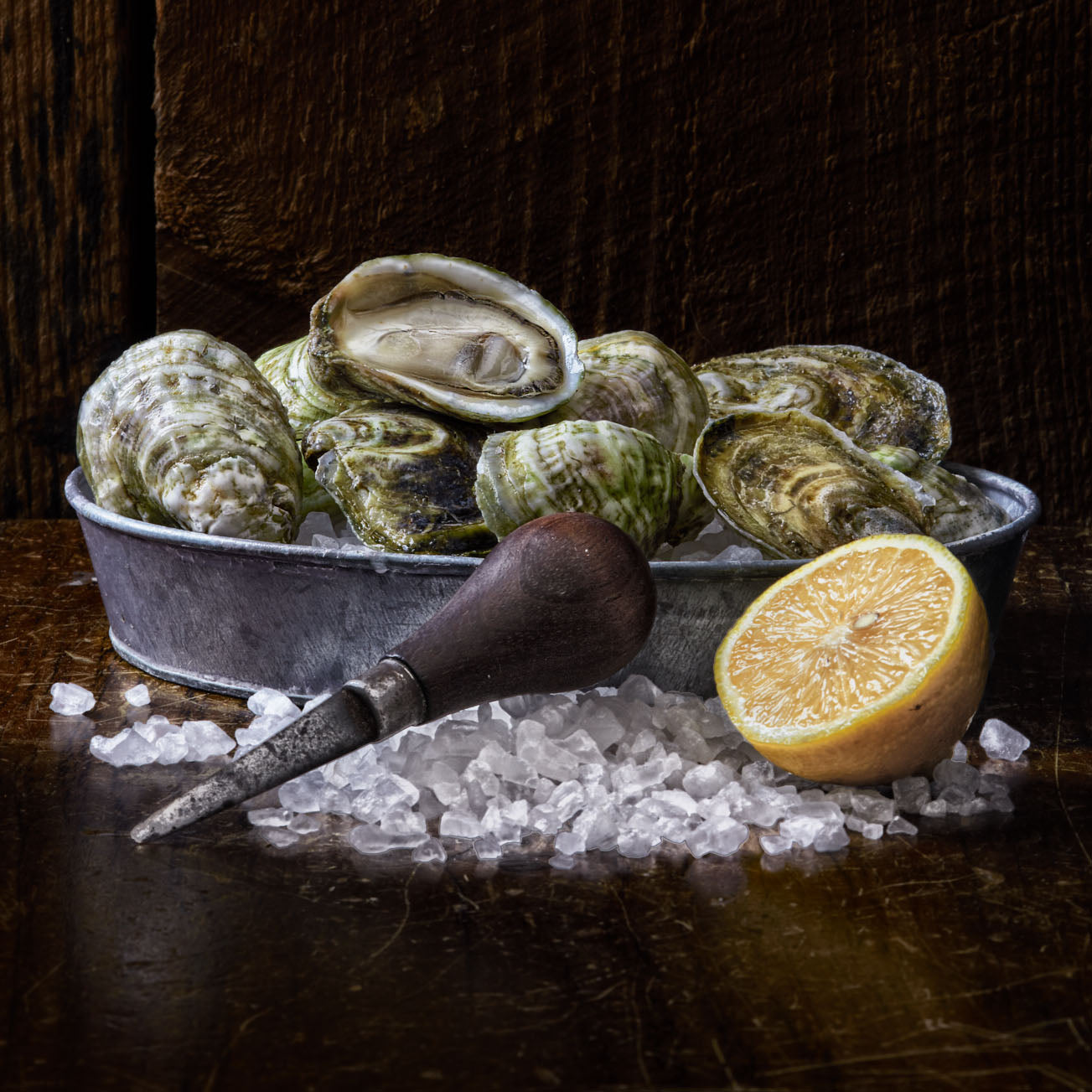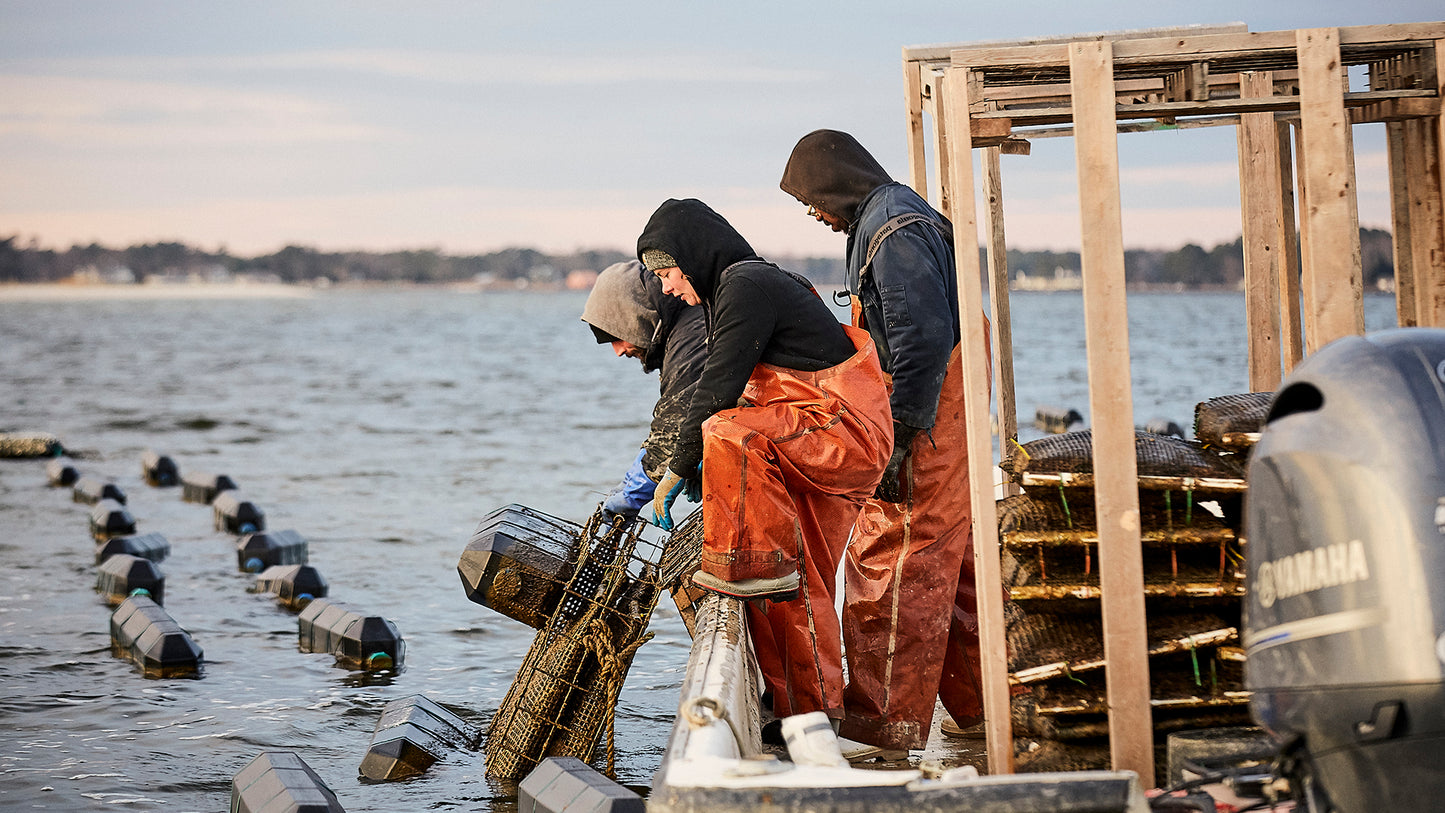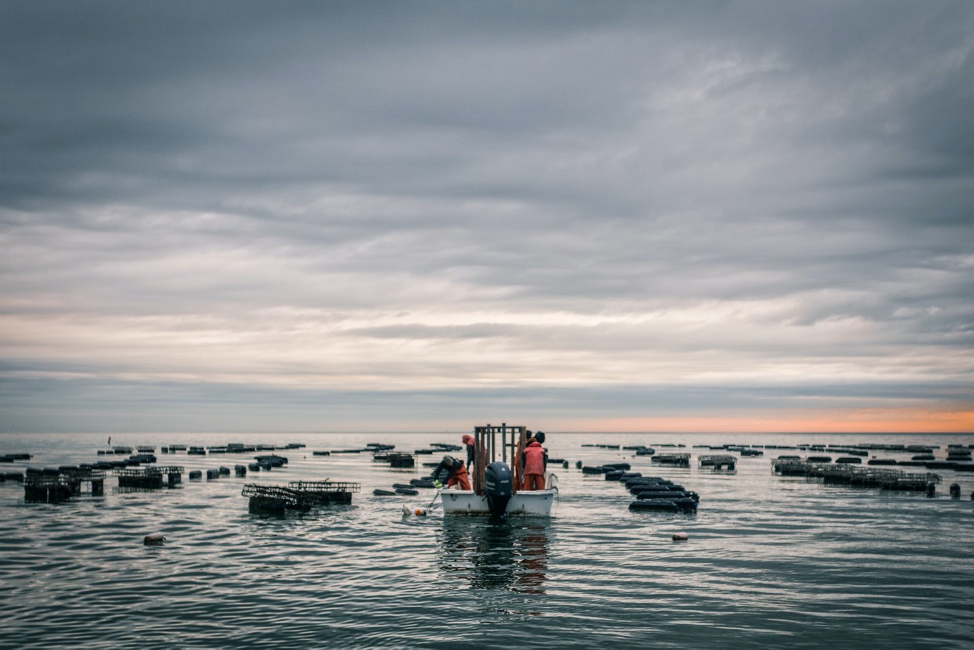Access Denied
IMPORTANT! If you’re a store owner, please make sure you have Customer accounts enabled in your Store Admin, as you have customer based locks set up with EasyLockdown app. Enable Customer Accounts
An Oyster Life (Blog) — Aquaculture
- 0 comments
- Tags: Aquaculture
Lights, Camera, Shuckin’ – Take a Look at Our YouTube Channel
Check us out on YouTube! We’ll be posting recipes, tips and guides to help you get the most out of your White Stone Oysters. Watch our newest videos below.
Oyster Shucking 101
White Stone Field Guide: Basic Oyster Mignonette
Wandering Waders Jarred Oysters Care
- 0 comments
- Tags: Aquaculture
News from the Farm: 2021 Spring Announcements
The season of renewal is here! If you’re like us you’re probably ready for sunny days, warm weather and a break from gray skies, cold winds and the news. We’ve got a LOT happening this spring and wanted to give you some updates. New Products: We’re proud to offer several new oyster kit sizes, caviar and a new hot sauce. They include: Smoked Stones Kit White Stones & Waders Kit The Fancy Feast Kit Red Clay Hot Sauce New Content: You asked and we listened! This spring you’ll start to see a ton of new content from us. It’s important...
- 0 comments
- Tags: Aquaculture, Tips
Spring Renewal: Eating Local Is Easy
With spring in bloom, now is the perfect time to freshen up what’s on your plate. Incorporating local foods into your diet can have dramatic health and ecological benefits. We pride ourselves on being stewards for the environment and constantly work to Better the Bay. Creating sustainable, nutritious food is obviously a huge part of what we do, and we know that our farm works within a larger cycle. When you choose to combine our fresh, farmed oysters with local produce and meats, you’re choosing to develop a diet that’s sustainable and responsible. Locally sourced foods reduce greenhouse gas emissions,...
- 0 comments
- Tags: Aquaculture, Tips
Life on the Half Shell: How to Recycle Your Oyster Shells
Oysters are truly a miracle food. Not only are they delicious, they’re also high in zinc and protein. They have numerous ecological benefits, and they continue giving after they’ve been shucked and slurped. Saving and recycling your oyster shells is a great way to maximize their value and benefit the soil and critters in your region. Save the Soil Adding oyster shells to your mulch in late Spring and early Summer can give you garden a big boost. Oyster shells have high amounts of calcium which can balance soil pH levels. They also help strengthen plant cell walls, improve nitrate...
- 1 comment
- Tags: Aquaculture
What the F#ck is a Pea crab?
Chances are, if you’re an oyster lover you’ve come across a pea crab or two in your day. But, to the oyster newbie these little ocean treats can be an unexpected surprise. In reality, the pea crab is a rare delicacy that many people are unfamiliar with. Meet the Pea Crab Pea crabs (Pinnotheres Ostreum) or oyster crabs (Zaops ostreus) are soft bodied crabs that live in bivalves like oysters and mussels. They’re kleptoparasites meaning they seal food from hosts to survive. Both varieties behave similarly and are generally referred to as pea crabs. They live inside the oyster’s gills,...
- 0 comments
- Tags: Aquaculture
Cherish the Chesapeake: Ways to Help Preserve the Bay
Our mission isn’t just to provide you with delicious oysters shipped fresh to your door. We also want to do our part to help preserve and improve the invaluable Chesapeake bay watershed. Oyster farming brings much needed revenue to the area and the oysters themselves act as filters, helping to clean the bay’s water and improving the overall ecosystem for other wildlife. As global warming, pollution and other factors continue to put more and more pressure onto this crucial watershed, it’s important we find ways to help. Here are a few ways you can help protect the Chesapeake Bay: Pick...
- 0 comments
- Tags: Aquaculture
FAQ- Everything You Need To Know About Whitestone Oysters
I got my oysters, now what? Easy! Unpack the box, store sack in a cooler or pour oysters into a bowl for storing in the fridge. You can also check out our blog on serving raw oysters for more tips. For the fridge: You want to be careful not to let your oysters dry out, which is why the damp towel is important. If you’re storing oysters on ice, make sure they don’t sit in freshwater. Stored properly, your oysters should keep for up to 10 days. Spotting a dead oyster is simple. If the bivalves are...
- 0 comments
- Tags: Aquaculture
The Story of the Shuck; A Brief History of Oyster Shuckers
As people have been opening oysters as long as we’ve been eating them. At some point, we were bashing them open with rocks, or heating them with fire. As we’ve evolved, so have our oyster shuckers. PHOTO: NATIONAL MUSEUM OF AMERICAN HISTORY The oyster revolution of the Chesapeake- fleets of boats full of teams of men would hit the shore with their precious cargo, and their shanks. The first oyster knives on the Chesapeake were produced in Crisfield, Maryland and dated back to the early 1900s. They were originally made of iron rods, with one tapered side and one blunt...

Recent articles
-
Heat and Sweet: Why Red Clay Hot Sauce is the Ideal Complement to Oysters
-
Shuckin Summer: How to Enjoy Your Oysters This Month
-
Oysters and Seafood Pairings: Creating Memorable Summer Meals
-
5 Fresh Oyster Toppings for Summer
-
The Cycle Of Life: How Oysters Reproduce
-
Here Are Some Tips on Including Oysters in Your Spring Garden
Categories
Invalid password
Enter








